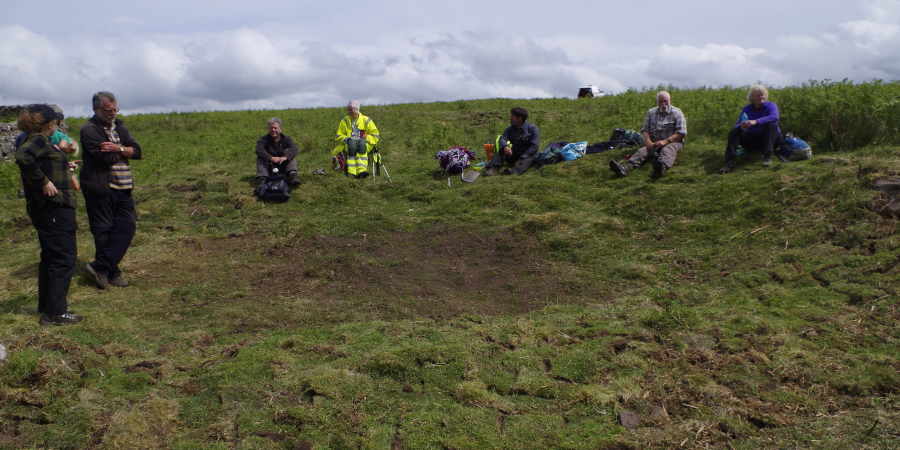Continuing our working supporting the archaeological investigations organised by the Revitalising Redesdale Landscape Partnership, Wessex Archaeology staff supervised a community excavation on a probable prehistoric upland settlement at Yatesfield, within the Otterburn Ranges. This project reunited the community volunteers from Revitalising Redesdale with the military veterans from Breaking Ground Heritage, to investigate a series of earthwork enclosures which had been identified and roughly planned during community Lidar assessment.
Over the course of five days of surprisingly benign upland weather (we even saw the sun for more than five minutes), six trenches across identified features were excavated and a wider landscape GPS survey completed. This identified a rough figure-of-eight shaped enclosure which proved to have hut platforms built into its southern and eastern sides, along with a series of field terraces and enclosure banks to the east and west. Even through the artefactual evidence recovered was sparse in the extreme, the physical remains of the structures was impressive, with the southern enclosure wall being almost a metre thick at its widest point. Outwith the main enclosure along the southern edge of the field terraces was at least one stone flagged hut circle, with a dark burnt deposit covering the flagstones.
It’s a hard task to gain a good insight into a complex settlement site in just five days when one of those days is taken up deturfing and returfing the trenches by hand, but the team on site took the challenge head on. Few things stand in the way of a determined Northumbrian with a mattock and the speed with which the difficult packed stones of the hut platforms were cleaned would’ve put many a professional archaeologist in the shade. One of the joys of these excavations is enabling the experienced community volunteers to mentor and support the military veterans, giving both groups the chance to learn about each other. After a long and isolating 18 months of Covid, re-establishing the social connections and rebuilding the familiarity of human interaction was as important a part of this project as understanding the archaeology.
Overall the results of the work were tantalisingly uncertain, at least as we closed the site up. We had demonstrated that the earthworks were those of a site, shown that at least two of the round features were hut circles or platforms and identified the layout of the field terraces but had been unable to recover any quantity of artefacts which would help to date this settlement. Indeed 50% of the finds archive (a flint bladelet and a round stone ball) were found by one volunteer who has now accepted a new identity far away to protect them from the envious revenge of their former friends. However the day was saved, as is so often the case in the uplands, by the environmental evidence recovered from a dark organic rich layer that had built up on one of the hut circle floors. We’re still working on this assemblage but it is typical of Late Iron Age/Romano-British upland agriculture and the construction of the hut was similar to those excavated at the nearby site of Rattenraw (report found here), which several of the volunteers had also worked on.
A far more important result was hearing that one of the military veterans, who had also taken part in last year’s excavations at Todlaw and in the Aberlady X-Craft project over the winter, had been so inspired by archaeology that he had applied and been accepted on to a degree course at the University of Bradford. These projects really do change lives, and I don’t think there can be any better result.
